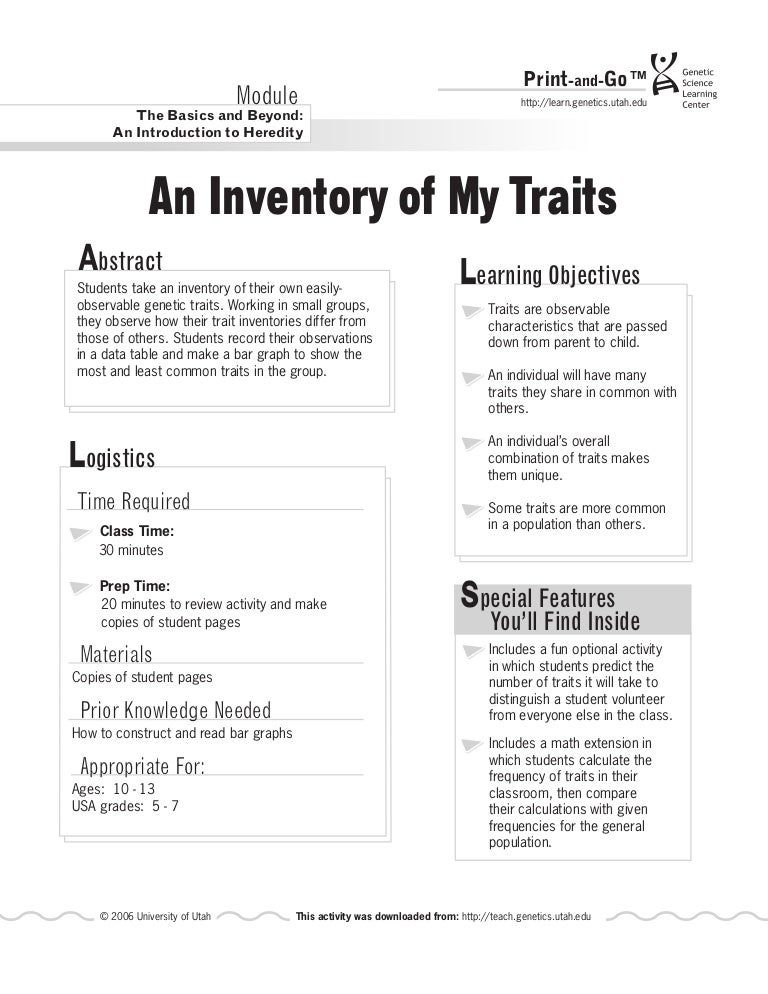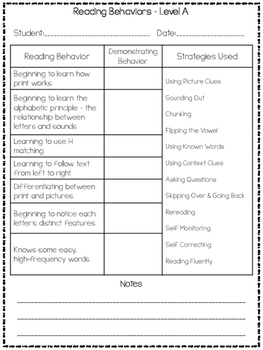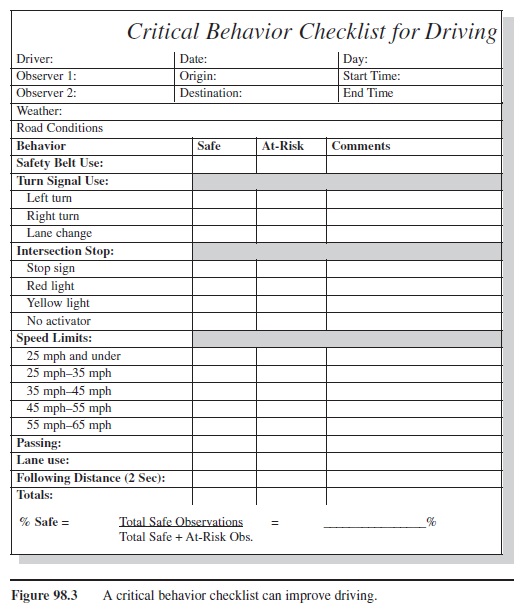
With this results-focused approach, a minimum level is set and the employee’s performance evaluation is based on this level. The employee always meets established deadlines.Īn example of a graphic rating scale is shown in Figure 11.1 “Example of Graphic Rating Scale”.įor certain jobs in which productivity is most important, a work standards approach could be the more effective way of evaluating employees.The employee consistently turns in below-average work.

Example of my checklist traits series#
This scale includes a series of mixed statements representing excellent, average, and poor performance, and the manager is asked to rate a “+” (performance is better than stated), “0” (performance is at stated level), or “−” (performance is below stated level). For example, some organizations use a mixed standard scale, which is similar to a graphic rating scale. Many organizations use a graphic rating scale in conjunction with other appraisal methods to further solidify the tool’s validity. IBM, IBM was able to successfully defend accusations of age discrimination because of the objective criteria the employee (Thomas) had been rated on. Development of specific criteria can save an organization in legal costs. This type of scale focuses on behavioral traits and is not specific enough to some jobs. The disadvantage of this type of scale is the subjectivity that can occur. We will discuss the types of criteria and rating methods next. For example, if “communication” and “interaction with client” are two criteria, the interaction with the client may be weighted more than communication, depending on the job type. Tied to the rating and criteria is the weighting each item will be given. Second, the rating is the type of scale that will be used to rate each criterion in a performance evaluation: for example, scales of 1–5, essay ratings, or yes/no ratings. First, the criteria are the aspects the employee is actually being evaluated on, which should be tied directly to the employee᾿s job description. Within the categories of performance appraisals, there are two main aspects to appraisal methods. Results methods are focused on employee accomplishments, such as whether or not employees met a quota. Comparative methods compare one employee with other employees. The behavioral method looks at individual actions within a specific job. The first is the trait method, in which managers look at an employee’s specific traits in relation to the job, such as friendliness to the customer. There are three main methods of determining performance. In addition to industry-specific and job-specific methods, many organizations will use these methods in combination, as opposed to just one method. Of course, these will change based upon the job specifications for each position within the company. For our purposes, we will discuss some of the main ways to assess performance in a performance evaluation form.



It probably goes without saying that different industries and jobs need different kinds of appraisal methods.


 0 kommentar(er)
0 kommentar(er)
